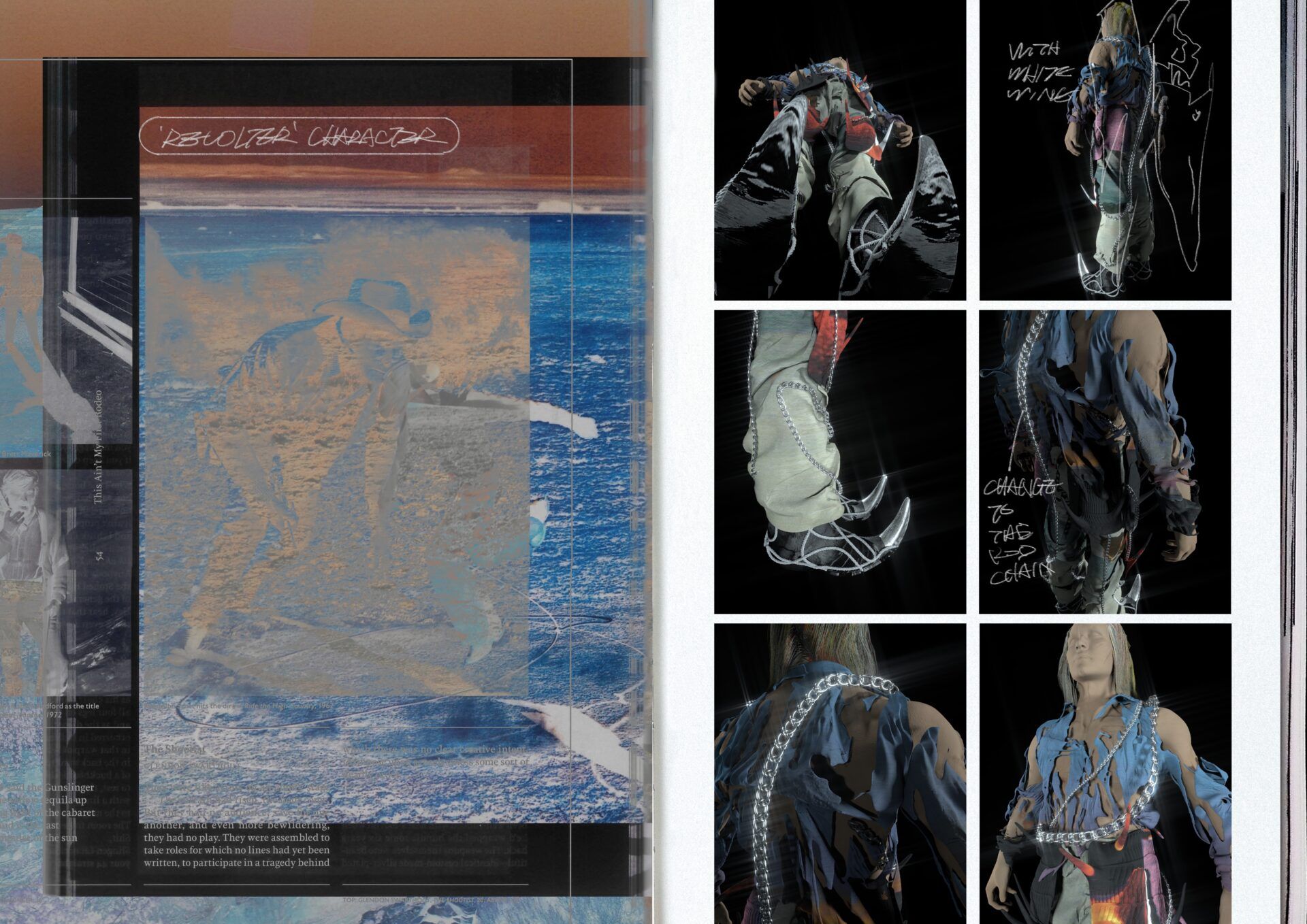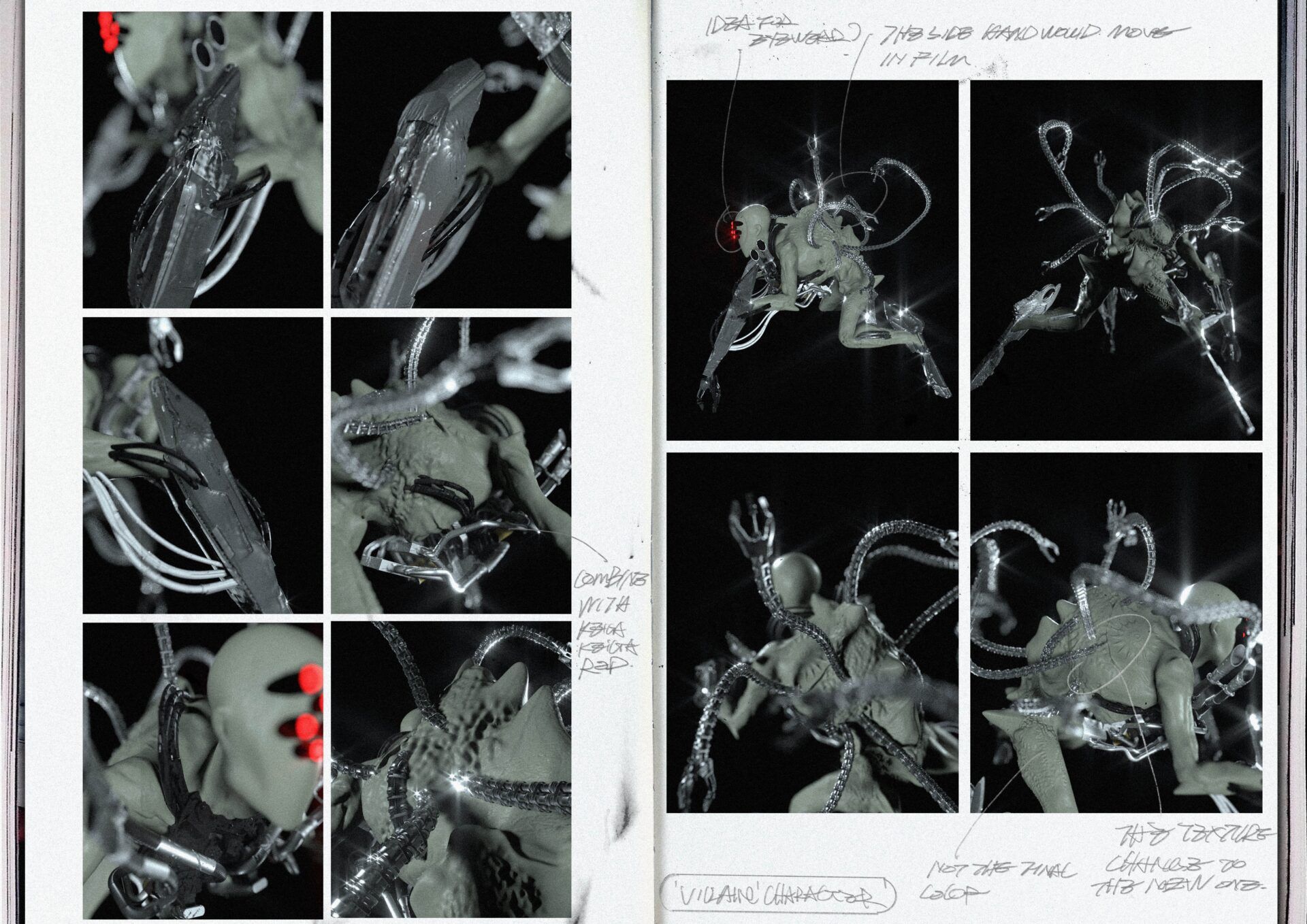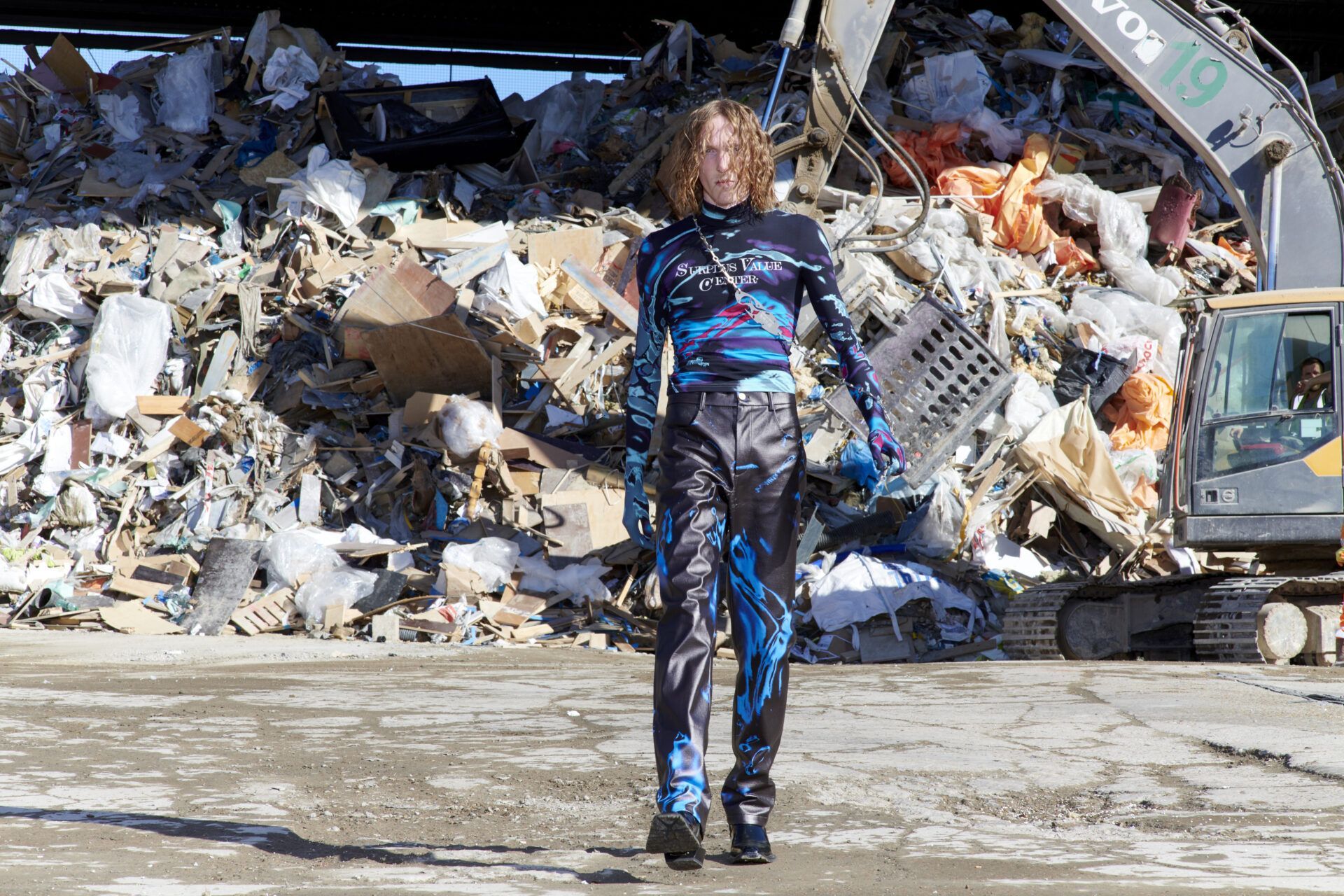What got you into fashion design?
What first attracted me when I was a teenager was Japanese street culture and the brands in Harajuku. This is also an important reason why I decided to live and study in Japan when I finished high school.
What fascinated you about clothing as a medium at the beginning of your career compared to now?
When I first studied design, it was actually product design in Japan. Therefore, WABISABI, Tanizaki Junichiro’s ‘In Praise of Shadows’ and others had a significant impact on me during my BA, which fascinated me also. During that period, my internship and job broadened my desire to know the world, which prompted me to come to London. Studying at RCA has also allowed me to see more possibilities, aesthetics and diversity, so I want to push things forward, break some traditional expressions, and create a new digital landscape.


Your work is delicately balancing between digital and real clothing. How do you see the future of fashion? Do you think it will be a place for proper tailoring, or will digital fashion be number one?
It’s almost 2022 and I think many things don’t matter anymore. I feel that as long as you follow your heart and do whatever you want to do, fashion can be of any form. For me, fashion could be based on a game’s architecture, which can communicate closely with the audience and bring a deeper sense of immersion and reflection. It could be from a simulation system, it could be real, or another dimension of reality.
As I’ve said before, I think fashion can be any kind of form. But in fact, it could be even more contradictory. I think fashion is somehow still quite old-school in terms of going to showcases and events. Many things are difficult to change. It is just like sustainable fashion, which has been discussed for decades, but it has not been fully realized even now. Although all the things may seem complicated, it is still very important to have hope, goals, and a positive attitude.



Can you introduce your latest project, ‘Surplus Value Center’?
This body of work was initially developed around a subcultural Chinese group. Their name is ‘SMART’. Most of them come from assembly line factories. The assembly line factory is like a different world. Forcing people to work overtime on weekdays and holidays. Taking advantage of workers, enforcing pointless labour hours, and wringing every last drop of surplus value from them, the worker eventually becomes a profitable machine. Therefore I created a utopian virtual world, spiritually revealing the plight of workers in Reality, released from ideology and the toxic working environment.
Toxic subjugation makes the People dream of Revolution, heroes from every corner of the world. And, in this fantasy, there is a Champion who they await and long to marvel at, someone who can provide them with hope and faith, and show them how to free themselves from the capitalists and the Monday society.

Afterwards I extracted the elements from these three different digital characters, and then, imaging what they would look like, what kind of clothes they would wear in real life. Addiction is the shadow of hard work, meanwhile truth is hidden and out of sight. Utopia and ruins, desire and loss, fantasy and history.


Your practice is also based on cooperation between individuals and teams. Can you also briefly introduce us to your collaborators?
A few weeks ago, me and four of my friends just held a showcase event called the E.A.A. Collective (End And And). The reason why we did this showcase was very simple. We had already graduated, and we didn’t want to end our MA career by simply getting a graduation certificate and taking some graduation photos, etc. We wanted to leave something behind, some memories which to remember as we grow and do different things. There is a lot of competition in the fashion industry, and you can feel it even at university. We don’t want to regard our classmates as competitors. We think classmates should be each other’s ‘comrades-in-arms’, confidantes. because they are the key to witnessing our growth. We hope we can support each other, appreciate each other and grow together.



And the last question: Utopian or dystopian future. What is your bet?
I am actually still full of hope for the future. Even if the world is complex and difficult, we still have to look at everything optimistically. Utopia or dystopia, I think there is no absolute. They should be interdependent. The world is a constant. There is increase and decrease, just like I have always believed that industrial products can embody human creativity and, at the same time, the destructive force of humans.

BIO / Keiga Hua Hui @keigakeiga was born in China. After working and studying in Japan, he has recently moved to London.
Keiga’s current work focuses on breaking through fashion’s traditional means of expression, exploring visual direction and digital transformation, and delicately balancing the relationship between the real and virtual worlds in clothing and wearable products.
Building inclusive and progressive digital worlds, Keiga aims to create the future landscape of emerging Asian youth subcultures that embrace other communities. Keiga adopts this approach in his own practice by collaborating with people and designers from different cultures and communities, creating closer cooperative relationships between individuals and teams and forming the future.

CREDITS
Surplus Value Center reality shot by @raphaelbliss
Shot supported by @yuanbo_chan
Shoes by @untitlab, @hello_sans_
Styling consultant by @oldenburgdavid
Styled by @e2yuji and me
Hair styled by @yiu___yiu
Model by @e2yuji
Location supported by @norrichroo
IOD Skip Hire Ltd & SOGI
Surplus Value Center
Virtuality
SVC06002021
3D Landscape Design by Yilin
Simulation Model by @standing0204 @keigo__okazaki & @e2yuji
Surplus Value Center
Video
Creative Direction by @keigakeiga & Yilin
Editing Direction by Yilin
Sound Design by @marco.henri.000
Simulation Model By @keigo__okazaki , @standing0204 & Yuji
Interview by Kateřina Hynková




